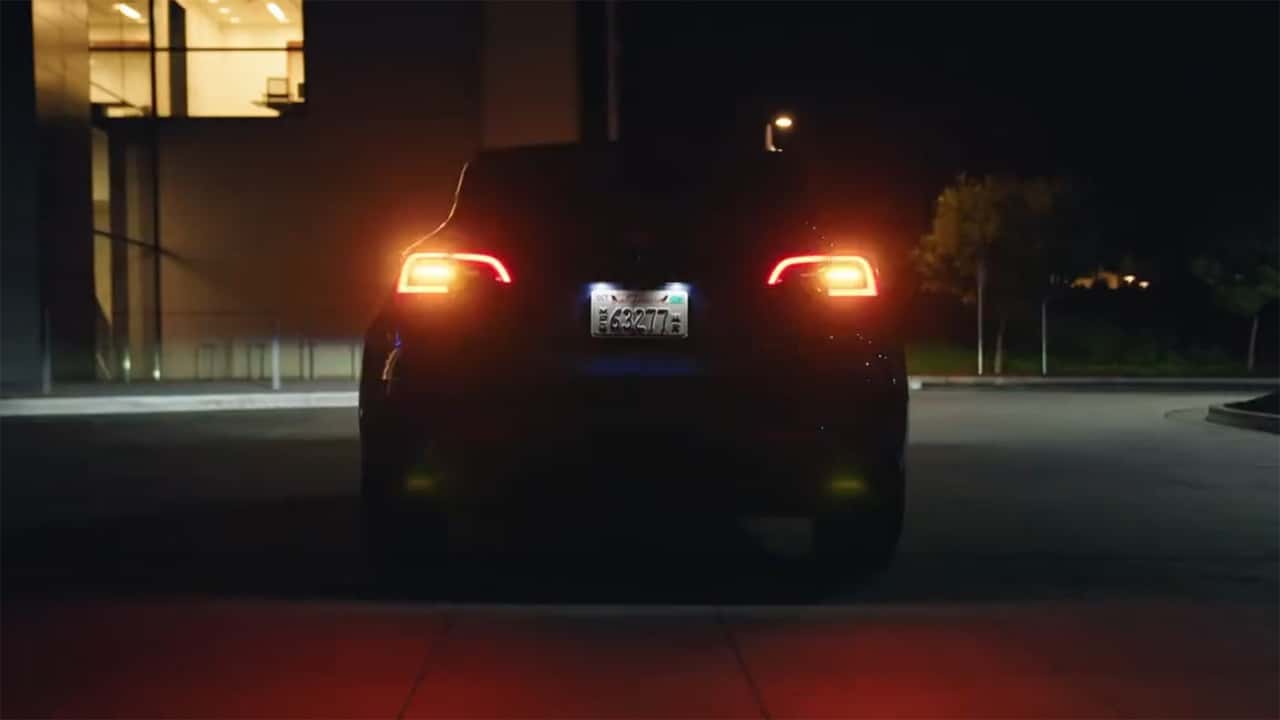Tesla has introduced a new safety feature for all of its passenger cars sold in the United States. The feature aims to enhance visibility after a crash. Starting recently, all Model 3 and Model Y vehicles bound for the US, as well as Model S and Model X cars made after 2020 and sold in the country, will receive an over-the-air (OTA) update. This update will activate hazard lights automatically and make them flash faster after an airbag is deployed.
The faster flashing of the hazard lights will make the damaged electric vehicles easier to spot, especially at night. The turn signals of the vehicles will act as a strobe light, similar to those found on heavyweight machines. Tesla announced this new feature through a post on its Tesla North America X Twitter account. The post was accompanied by a short video demonstrating the feature in action.
It’s important to note that many car manufacturers, including Volvo, BMW, and Volkswagen, have already incorporated this safety feature in their vehicles since the 2000s.
This isn’t the first time Tesla has introduced updates to enhance safety and functionality through OTA software updates. In July, the company rolled out an update that allowed drivers to adjust the speed of the windscreen wipers directly from the steering wheel, without having to activate them first.
Other previous updates include improvements to the regenerative braking function when using the Autopilot driver assistance system and the introduction of Track Mode, which is geared towards circuit-oriented driving.
Tesla has been a strong advocate for using OTA updates to address recalls. According to a report from last year, Tesla has implemented OTA updates for seven out of the 19 recalls issued by the National Highway Traffic Safety Administration (NHTSA) from 2020 to 2022. This approach has allowed Tesla to swiftly address safety concerns without the need for physical repairs or replacements.
In fact, Tesla’s CEO, Elon Musk, has criticized the NHTSA’s terminology for recalls, suggesting that it is outdated and inaccurate. This comes in the context of Tesla issuing a software fix for approximately 1.1 million vehicles across all models in response to a potential issue with the side window automatic reversal system.
Overall, Tesla’s commitment to utilizing OTA updates for safety enhancements and addressing recalls demonstrates the company’s dedication to continuously improving its vehicles and ensuring the safety of its customers.
Tesla Introduces New Safety Feature that Automatically Activates Hazard Lights Following an Accident
In a continued effort to prioritize safety and innovate within the automotive industry, Tesla, the renowned electric vehicle manufacturer, has introduced a groundbreaking safety feature. This new offering, which automatically activates hazard lights following an accident, aims to enhance driver and passenger protection while also improving post-collision visibility.
Accidents are unfortunate events that can occur unexpectedly, leaving both victims and witnesses in critical need of assistance. Recognizing the significance of prompt response and visibility in such situations, Tesla’s hazard light automation feature automatically engages the vehicle’s hazard lights as soon as it detects a collision.
The activation of hazard lights immediately following an accident helps to alert other drivers on the road to be cautious and encourages them to slow down or change lanes, reducing the risk of additional collisions. By promptly addressing the visibility issue that arises after an accident, Tesla’s innovation ultimately aims to save lives and mitigate post-collision injury severity.
Tesla’s hazard light automation goes beyond the conventional manual activation method, which requires the occupants or witnesses of an accident to manually enable hazard lights. This feature eliminates the possibility of human error or delay in recognizing the need for activating hazard lights, as it acts proactively by swiftly signaling the situation to surrounding drivers. This automated response significantly improves overall response time, enhancing the effectiveness of emergency response teams reaching the site promptly while potentially minimizing the threat of secondary accidents.
Furthermore, this feature is designed to activate regardless of whether the occupants are able to operate the controls manually. Even in instances where the vehicle becomes incapacitated or the occupants are unable to reach the hazard light switch due to injury, Tesla’s innovation steps in to ensure that the hazard lights are activated, safeguarding both the occupants and any potential first-responders on the scene.
Tesla’s commitment to safety has been evident from the very beginning, with its state-of-the-art Autopilot system, advanced driver assistance features, and robust safety ratings consistently meeting and exceeding industry standards. The introduction of this groundbreaking hazard light automation system is yet another testament to the company’s unwavering dedication to providing the safest driving experience possible.
While Tesla’s innovation addresses a pressing safety concern, it also opens up new possibilities for the future of automotive technology. This feature can potentially serve as a foundation for further automated safety functionalities, such as real-time transmission of accident data to emergency responders or even autonomous emergency braking systems. By integrating cutting-edge technologies, Tesla continues to spearhead advancements within the automotive industry, setting new benchmarks for safety and efficiency.
In conclusion, Tesla’s introduction of a new safety feature that automatically activates hazard lights following an accident is a significant step forward in automotive safety. By eliminating human error and delay, this feature enhances response time and visibility in critical moments, potentially saving lives and reducing injury severity. As Tesla continues to lead the way in pioneering advancements within the industry, the integration of this innovative safety measure opens up doors for future developments, shaping the future of automotive safety technology for the better.

